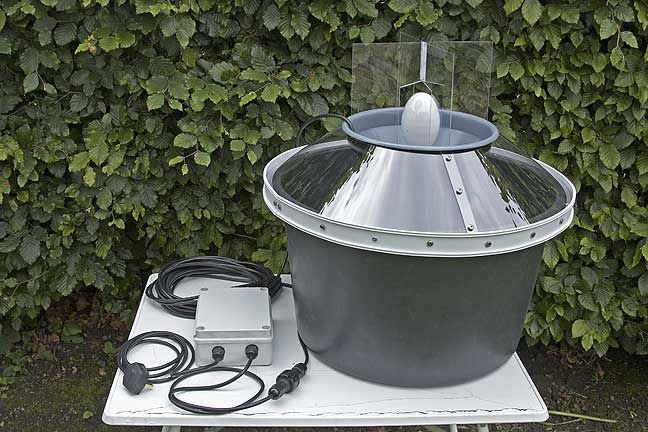Make a light trap
Build a safe LED light trap to attract and observe night insects using a jar, funnel, and batteries; record observations and release them gently.



Step-by-step guide to make a light trap
How Do I Make A Flea Trap With A Light? - Insects and Invaders
Step 1
Ask an adult to help you with this project.
Step 2
Gather all the Materials Needed from the list.
Step 3
Wash and dry the jar thoroughly so it is clean and clear.
Step 4
Make a funnel by rolling the sturdy paper into a cone and cutting the tip to a small hole that fits the jar mouth.
Step 5
Insert the narrow end of the funnel into the jar mouth and tape it securely around the rim.
Step 6
Place a sheet of white paper inside the jar against the wall to reflect light and make insects easier to see.
Step 7
Put the battery-powered LED tea light at the bottom of the jar and make sure it sits flat and won't tip.
Step 8
Take the trap outside and set it on the ground in a safe spot near plants at dusk.
Step 9
Turn on the LED and leave the trap undisturbed for 15 to 30 minutes so night insects can come in.
Step 10
Turn off the LED before you open the jar.
Step 11
Bring the jar to a shaded quiet spot for observing.
Step 12
Gently lift the jar to look inside without shaking it.
Step 13
Use your notebook to write down how many insects you see and any colors shapes or behaviors.
Step 14
Return the jar to a nearby plant and carefully remove the funnel so the insects can fly or crawl away.
Step 15
Share your finished light trap and your observations on DIY.org
Final steps
You're almost there! Complete all the steps, bring your creation to life, post it, and conquer the challenge!


Help!?
What can we use if we don't have a glass jar, sturdy paper, or an LED tea light?
Use a clear plastic bottle or empty clear food container instead of the glass jar, roll a piece of cardboard or cardstock into the funnel as in step 3, and use a small battery flashlight instead of the LED tea light while still fitting the funnel's narrow end to the jar mouth and taping it in place.
What should we do if the funnel keeps falling in or the LED tea light tips over?
Follow step 4 and tape the funnel securely around the rim so it won't shift, and follow step 5 by placing the LED on a flat coin or small pebble so the tea light sits flat and won't tip at the bottom of the jar.
How can I adapt the activity for younger or older kids?
For younger children have an adult do the funnel rolling, cutting, and taping and limit observing to 5–10 minutes, while older kids can build their own funnel, add a magnifying glass, keep a species log in the notebook, and observe for the full 15–30 minutes from the instructions.
How can we improve or personalize the light trap to learn more?
Decorate and label the jar, tape a small magnifying lens to the inside wall for closer looks, try different colored battery-powered LEDs to compare which insects are attracted, and record counts and colors in your notebook before removing the funnel to release the insects as instructed.
Watch videos on how to make a light trap
How to make a light trap to collect insects
Facts about insect observation for kids
🪲 Backyard light traps can attract a variety—moths, beetles, crickets, and night-flying flies—sometimes dozens of species in a single night.
🔬 Citizen scientists often use light-trap observations to help monitor insect populations and local biodiversity.
🔦 LEDs run cooler and use up to about 80% less energy than incandescent bulbs, making them safer for kid-friendly traps.
🌙 Many insect groups are primarily nocturnal, so night trapping reveals creatures you usually won't see during the day.
🦋 Many moths navigate by moonlight, so small LED light traps mimic those cues and can attract them for close-up viewing.
How do you build a safe LED light trap to attract and observe night insects?
What materials do I need to make a DIY LED insect light trap?
What ages is a homemade LED insect light trap suitable for?
What safety precautions should parents take when using a light trap?


One subscription, many ways to play and learn.
Only $6.99 after trial. No credit card required



